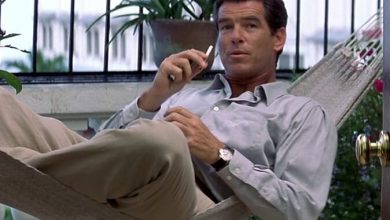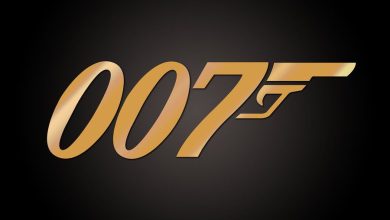The Intriguing Tale of Thunderball: Why Some People Claim the James Bond Movie Was Made Twice

The world of James Bond has been captivating audiences for decades, with its iconic spy adventures, thrilling action, and unforgettable characters. Among the many Bond films, “Thunderball” stands out as a movie with a unique history, leading to some claims that it was made twice. In this article, we will explore the intriguing tale behind Thunderball, the legal disputes, creative differences, and the subsequent release of “Never Say Never Again.” Get ready to dive into the world of espionage, as we uncover why some people believe Thunderball had two iterations.
Key Takeaways
- Thunderball, released in 1965, is the fourth official installment in the James Bond film series produced by Eon Productions.
- Creative differences between Ian Fleming and Kevin McClory resulted in a legal battle and the claim that Thunderball was made twice.
- Kevin McClory gained the rights to produce a Bond film based on the Thunderball storyline, leading to the release of “Never Say Never Again” in 1983.
- Despite similarities in the storyline, Thunderball and Never Say Never Again showcase differences in creative execution and style.
- Thunderball is considered an official James Bond film, while Never Say Never Again is often regarded as an unofficial Bond movie.
2. Thunderball: A Brief Overview
Before delving into the claim of Thunderball being made twice, let’s provide a brief overview of the movie itself. Thunderball is the fourth installment in the James Bond film series, released in 1965. The movie features Sean Connery as James Bond, Agent 007, and follows his mission to recover two stolen nuclear warheads.
3. The First Iteration: Thunderball (1965)
The initial production of Thunderball was helmed by Eon Productions, the company responsible for the James Bond franchise. The movie was directed by Terence Young, who had previously directed two other Bond films. However, during the pre-production phase, several challenges and creative differences arose, leading to a complex legal situation that contributed to the claim of Thunderball being made twice.
4. Legal Disputes and Creative Differences
4.1 Ian Fleming and Kevin McClory The root of the issue can be traced back to Ian Fleming, the author of the James Bond novels, and Kevin McClory, a screenwriter. Fleming had collaborated with McClory and Jack Whittingham on an early draft of a James Bond screenplay, which included elements that would eventually become Thunderball’s storyline. However, disagreements between the parties led to the project’s abandonment.
4.2 The Lawsuit When Thunderball was officially greenlit by Eon Productions, McClory took legal action, claiming that the storyline and certain elements of the film were derived from the earlier collaboration. The legal battle that followed resulted in McClory being granted the rights to produce a Bond film based on the Thunderball storyline, leading to the claim that Thunderball was made twice.
5. The Second Iteration: Never Say Never Again (1983)
As a result of the legal disputes, Kevin McClory gained the rights to create a Bond film using the Thunderball storyline. In 1983, he released “Never Say Never Again,” which featured Sean Connery reprising his role as James Bond. This film, often considered an unofficial Bond movie, can be seen as the second iteration of Thunderball.
6. Similarities and Differences
While Thunderball (1965) and Never Say Never Again (1983) share a common storyline, there are notable differences between the two films. These differences primarily stem from the contrasting creative visions and execution of the respective directors and production teams. Despite these distinctions, both movies revolve around Bond’s mission to recover stolen nuclear warheads, featuring thrilling action sequences and the charm of Sean Connery as 007.
7. Impact and Legacy
The production and release of Never Say Never Again added an intriguing chapter to the James Bond franchise. It created a parallel narrative to Thunderball, leaving fans with two distinct interpretations of a Bond film based on similar source material. While Thunderball remains an official installment within the Bond series, Never Say Never Again continues to captivate audiences as a unique Bond experience.
FAQ
1. What are the creative differences that led to Thunderball being made twice?
Creative differences in the production of Thunderball played a significant role in the claim that the movie was made twice. These differences primarily revolved around the vision for the film’s execution, resulting in a complex legal situation. The conflict arose between Ian Fleming, the author of the James Bond novels, and Kevin McClory, a screenwriter.
Ian Fleming initially collaborated with McClory and Jack Whittingham on an early draft of a James Bond screenplay, which included elements that would later become Thunderball’s storyline. However, disagreements arose, leading to the project’s abandonment. When Thunderball was eventually produced by Eon Productions, McClory claimed that the film utilized ideas from their earlier collaboration, sparking a legal battle.
The creative differences between Fleming and McClory involved differing interpretations of the story’s direction and the ownership of certain elements. These disagreements ultimately resulted in McClory being granted the rights to produce his own Bond film based on the Thunderball storyline, leading to the release of Never Say Never Again in 1983.
2. Is Thunderball (1965) considered an official James Bond movie?
Yes, Thunderball (1965) is considered an official James Bond movie within the franchise. Despite the legal disputes and the subsequent release of Never Say Never Again, Thunderball is recognized as the fourth installment in the official James Bond film series produced by Eon Productions. It features Sean Connery reprising his role as James Bond, Agent 007, and follows the character’s mission to recover stolen nuclear warheads.
While Never Say Never Again can be seen as a parallel iteration of Thunderball, it is important to note that it is often considered an unofficial Bond film due to its unique production circumstances. Thunderball remains an integral part of the official James Bond canon, contributing to the legacy and continuity of the series.
3. How does Never Say Never Again differ from Thunderball?
Never Say Never Again, released in 1983, differs from Thunderball (1965) in several aspects. Despite sharing a common storyline, the two films showcase distinct characteristics resulting from the creative visions of their respective directors and production teams.
One notable difference lies in the execution of the action sequences and overall style. Thunderball, directed by Terence Young, features his signature flair for stylish and impactful action scenes. In contrast, Never Say Never Again, directed by Irvin Kershner, adopts a slightly different tone, emphasizing a more gritty and realistic approach to the action.
Additionally, the passage of time between the two films allowed for advancements in filmmaking technology and techniques. As a result, Never Say Never Again benefits from improved special effects and visual aesthetics compared to its predecessor.
Despite these differences, both films retain the core elements that make a Bond movie, such as the charismatic portrayal of James Bond by Sean Connery and the thrilling espionage storyline involving high-stakes missions and global threats.
Conclusion
The story behind Thunderball is a testament to the complexities and challenges that can arise during the production of a beloved film franchise. The legal disputes and creative differences surrounding Thunderball led to the creation of Never Say Never Again, adding an intriguing chapter to the James Bond legacy.
While Thunderball remains an official installment in the Bond series, Never Say Never Again offers a distinct interpretation of the Thunderball storyline. Both films have their unique merits, showcasing the charm of Sean Connery as James Bond and delivering thrilling espionage adventures.
In the end, Thunderball’s claim of being made twice adds an extra layer of fascination to the already captivating world of James Bond, reminding us of the intricacies and creative endeavors that contribute to the enduring popularity of the franchise.








